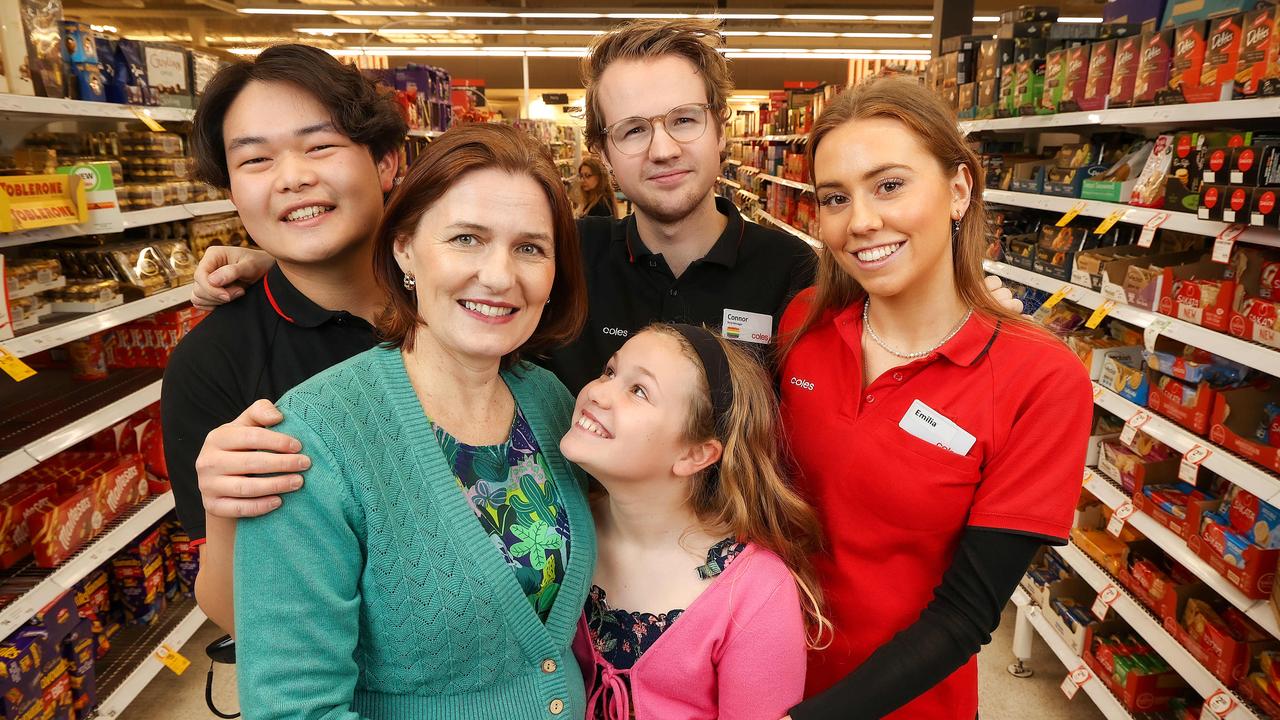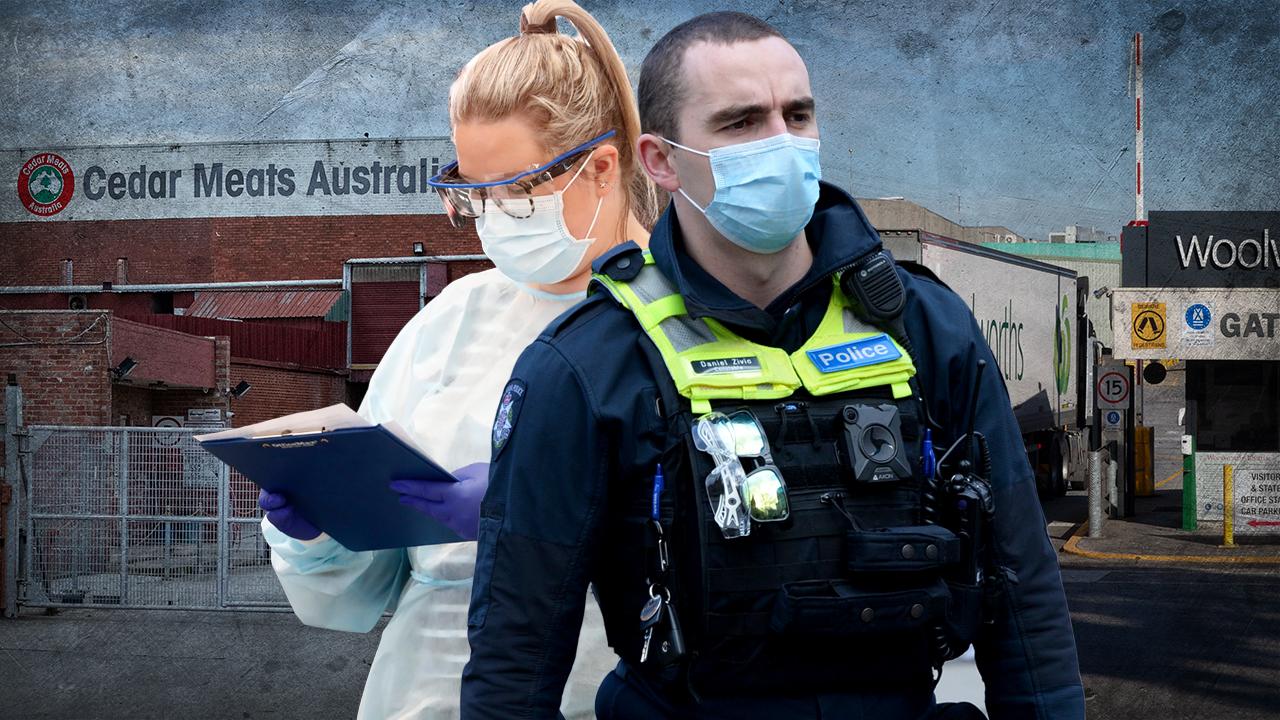41 new COVID-19 cases as Melbourne hotspot transmission worsens
A nurse at the Royal Melbourne Hospital has tested positive to COVID-19 as Victoria recorded dozens more coronavirus cases overnight, with another alarming spike of community transmission.
This coronavirus article is unlocked and free to read in the interest of community health and safety. Get full digital access to trusted news from the Herald Sun and Leader for just $1 a week for the first 12 weeks.
A nurse at the Royal Melbourne Hospital has tested positive for COVID-19, prompting widespread alerts.
Staff, patients and visitors who may have come in contact with the emergency department staffer have been informed after the new case was confirmed.
A statement released by the hospital today said support would be provided to the COVID-19 positive nurse.
“We are providing support to one of our staff members, who works in our emergency department,” the statement read.
“Any staff, patients or visitors who may have been affected have been informed and our Infection Prevention and Surveillance Service is providing support.”
Additional cleaning and contact tracing is underway in the emergency department with the hospital said to be working closely with the Department of Health and Human Services.
A DHHS spokesman said further information is expected to be provided on this case ON Sunday through its COVID-19 briefing.
The Royal Melbourne Hospital refused to answer further questions on how many patients and staff came in contact with the COVID-19 positive nurse, as the investigation is still ongoing.
The positive test will be counted as a figure in Sunday’s COVID-19 tally.
It comes as forty-one cases of coronavirus were recorded in Victoria overnight, with the state recording yet another spike in community transmissions.
Fifteen new cases indicate community transmission, with the government today sending thousands of emergency alerts to residents in COVID-19 hot spots.
Friday’s new cases include one case detected in returned travellers in hotel quarantine.
Deputy chief health officer Annaliese van Diemen said health authorities were “very concerned”.
“(The new cases) predominantly are in the inner northwest corridor suburbs, so really in those hotspot suburbs … in those LGAs that have been discussed in the last week,” she said.
“So we’re not seeing any real uptick in cases at the moment in those other areas of Melbourne.”
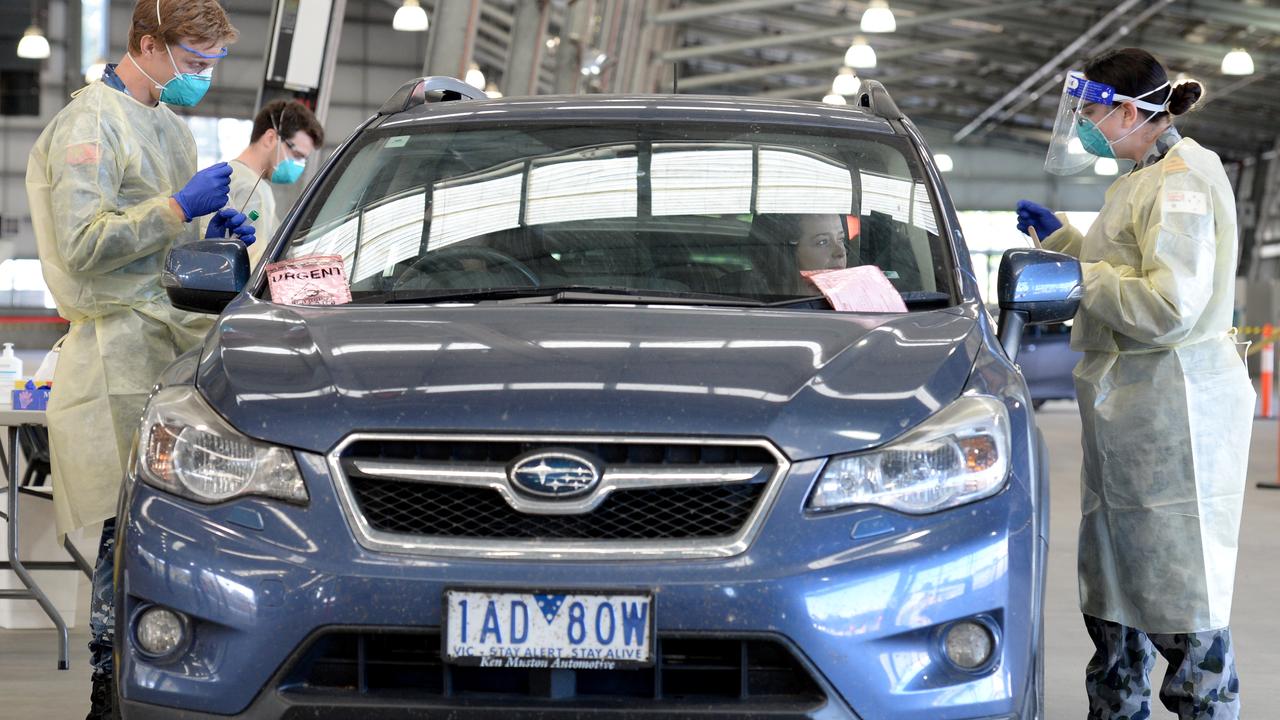
Eight new cases were linked to existing outbreaks, with three linked to the North Melbourne family break, two to Albanvale Primary School, and one each to Keilor Downs, Stamford Plaza and Wollert.
“All bar one are close contacts who had been identified and had been in quarantine at the time of their diagnosis,” Dr van Diemen said.
She declined to describe the latest increase in cases as a second wave, instead saying she hoped numbers were close to peaking.
“Our case numbers are increasing so when you look at our overall epidemiological curve there will be, and I’m hoping very soon, a second bump or a second peak, and so that is what this is,” Dr van Diemen said.
“Whether we have second, third, fifth, 10th waves, nobody really knows. This is not something any of us have experienced before.
“We will continue on a suppression strategy and, as our Premier and multiple others have said, we know that cases and outbreaks will continue to occur, and we are really just doing our best to keep absolutely on top of them.”
The Victorian Government on Friday launched a targeted blitz across ten priority suburbs with a team of 800 testers to zero-in on community transmission with a fleet of mobile vans. Over the next 10 days, residents of these suburbs will receive free testing – with or without symptoms.
On the advice of the Chief Health Officer, priority suburbs include Keilor Downs, Broadmeadows, Maidstone, Albanvale, Sunshine West, Hallam, Brunswick West, Fawkner, Reservoir and Pakenham, with Keillor Downs and Broadmeadows identified as the top two and current focus of testing.
PUSH FOR COMPULSORY TESTING OF TRAVELLERS
Victoria is seeking legal advice about whether it can force returned travellers to be tested for coronavirus.
The state government confirmed today it was seeking legal advice if it could make returned travellers in hotel quarantine get tested, a day after it was revealed they don’t have to in Victoria.
“It’s the government’s view that all returned travellers should be tested,” a government spokeswoman said.
“Following yesterday’s decision at National Cabinet, Victoria is getting legal advice to explore all options.”
Victoria’s hotel quarantine program tests travellers on arrival and the 11th day, the government said.
Over the border in NSW, returned international travellers who refuse to have the test on day 10 must stay an extra 10 days in quarantine.
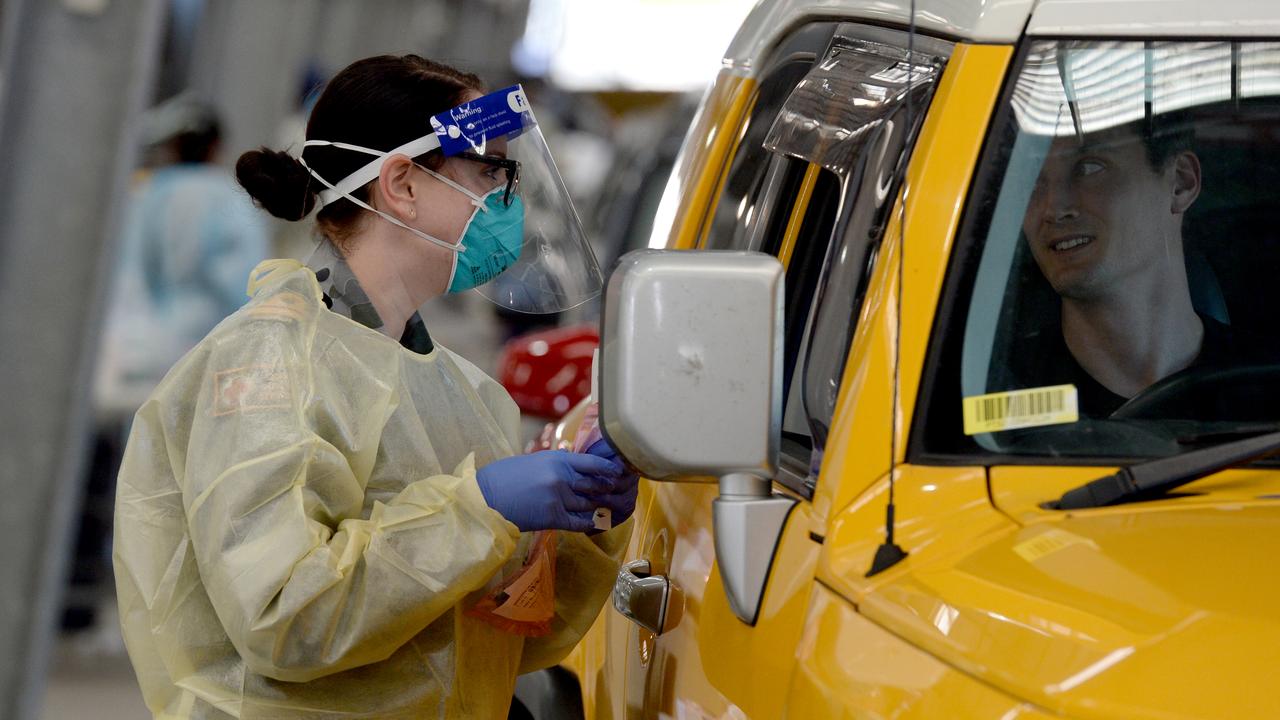
NSW has a two per cent test refusal rate, authorities said on Saturday. Treasurer Josh Frydenberg said it was important to test and trace as many people as possible to prevent the spread of the virus.
“It is very important that people do put themselves forward to have these test because ultimately if someone gets coronavirus they are endangering the lives others across the community,” he told reporters in Melbourne on Saturday.
Concerns erupted after Deputy Chief Health Officer Annaliese van Diemen revealed on Friday about 30 per cent of travellers refuse to be tested during their 14-day quarantine.
“We’re getting about 70 per cent of people uptake tests,” she said.
National Chief Medical Officer Brendan Murphy said people in hotel quarantine needed to be tested at the start and end of their stint, and states had powers to make it happen.
Victoria recorded 30 new COVID-19 cases on Friday as the state racked up a 10th day of new cases in the double digits.
That is in stark contrast to the low numbers being recorded across the rest of the country.
Of the state’s 1947 total cases, 183 are active including six people in hospital.
PUBS PUSH FOR CHANGES TO RESTRICTIONS
Victorian pubs are pleading for changes to patron limits as other states push ahead with plans to ease coronavirus restrictions and reopen their borders.
The National Cabinet agreed yesterday that the limit of one person per 4sq m could be eased to one person per 2sq m in smaller venues — a rule already in place in Tasmania and Western Australia.
The move is designed to help wine bars and other establishments which have been unable to welcome enough customers to make their businesses commercially viable.
Hotel owners want the Andrews Government to immediately loosen limits on their venues as well.
It comes as the national medical expert panel last night released new advice for stadium operators, which could see footy fans forced to bring their own food and go without a beer when they are allowed into the stands at AFL matches in Victoria later this year.
The panel warned against opening takeaway food and drink outlets at stadiums because of the “risk of overcrowding and mixing”.
It also said venue operators needed to stagger entry and exit times, allocate seats with appropriate distancing, and deliver transport plans to prevent a commuter crush after games.
The AFL and the Andrews Government are aiming to allow bigger crowds later in the season, rather than giving the green light to a few hundred fans to attend matches in coming weeks.
Speaking after yesterday’s National Cabinet meeting, Prime Minister Scott Morrison said the leaders were “sticking with the three-step plan” for a COVID-safe national economy by July.
“We have some challenges in Victoria at the moment but I think that does put it in perspective,” he said.
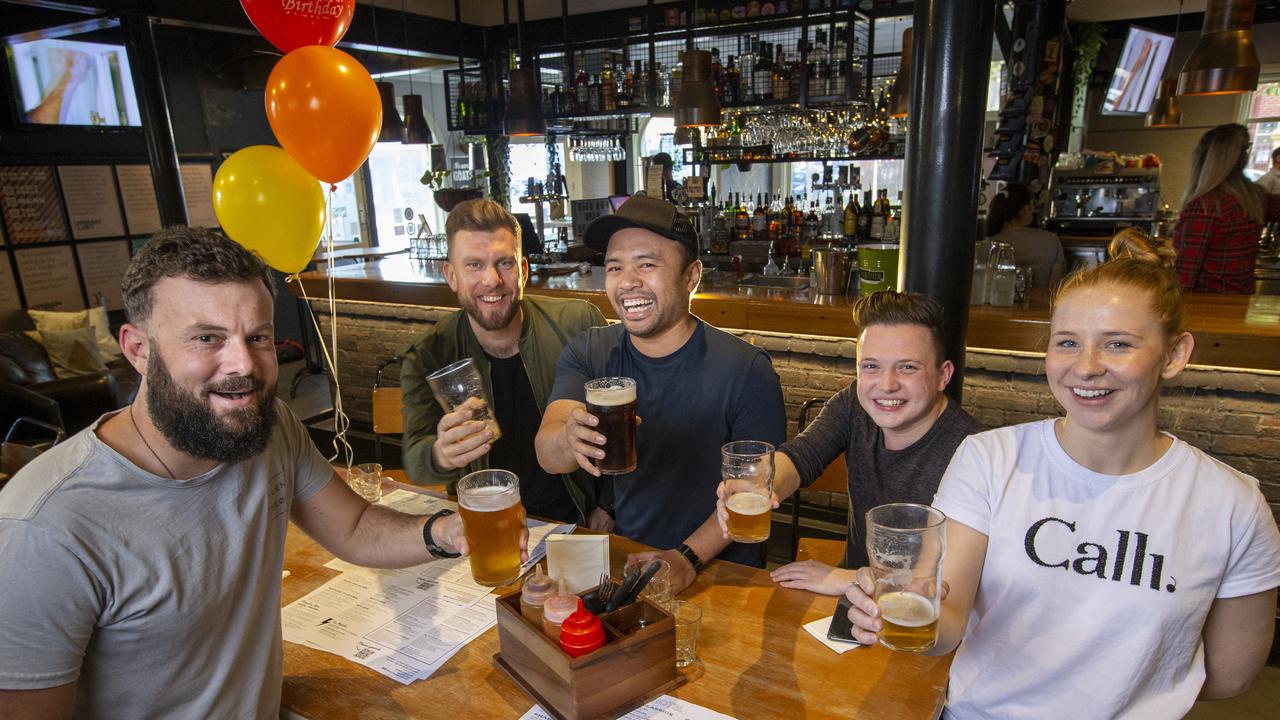
“We remain on track, the curve remains flat. But where you get bumps and when you get outbreaks, then you need to manage them and you need to respond to them, and that is exactly what is happening.”
Australian Hotels Association Victoria chief executive Paddy O’Sullivan told the Herald Sun the Andrews Government needed to immediately adjust patron limits for pubs.
“The new cases don’t stem from pubs or hotels, they are largely household-related,” he said.
“It’s a strong argument that pubs can manage the risk for COVID-19 and proven we can.
“The current rule of one person per 4sq m means pubs are running at 25 per cent capacity and that is unviable.
“A lot of pubs are still closed because the rule makes it uneconomic.
“This would allow us to increase the number of people per enclosed area so we can employ more staff and welcome back more customers.”
Mr Morrison said he expected the states would reopen their borders next month, with all outlining dates for those restrictions to change except for Western Australia.
Some states are still likely to require visitors from coronavirus hot spots — such as the Melbourne suburbs which are currently battling outbreaks — to immediately self-isolate when they arrive.
Mr Morrison said that was “a reasonable way to do that”.
“What that does is reinforces that this is about where the hotspot is and these are localised outbreaks,” Mr Morrison said.
“People shouldn’t be going out of those areas and nor should people be going into those areas.
“That’s how you manage an outbreak.”
HOW ADF REQUEST BUNGLE UNFOLDED
Victorian authorities specifically asked for hundreds of Defence Force personnel to sort out the state’s problem-plagued hotel quarantine system before the request was ditched less than a day later.
The Herald Sun can reveal Victoria’s formal written request — lodged with the ADF at 8pm on Wednesday — included 850 members to be “assisting with hotel quarantine monitoring”, as well as another 200 medical personnel.
That plan was then torn up by the Andrews Government at lunchtime on Thursday, with Federal Government sources confirming it caused “hours of chaos” as the deployment had already started.
But Victoria has claimed the ADF suggested it would be duplicating existing arrangements if it was to help with the hotel quarantine system. A revised request, lodged and approved yesterday, involves 200 personnel who will arrive over the weekend to help with the state’s testing blitz.
The Andrews Government was last night still considering whether police and protective services officers would instead be sent to hotels where overseas arrivals must stay for 14 days. But on Thursday night, Prime Minister Scott Morrison said “those issues are now being dealt with by Victorian police”.
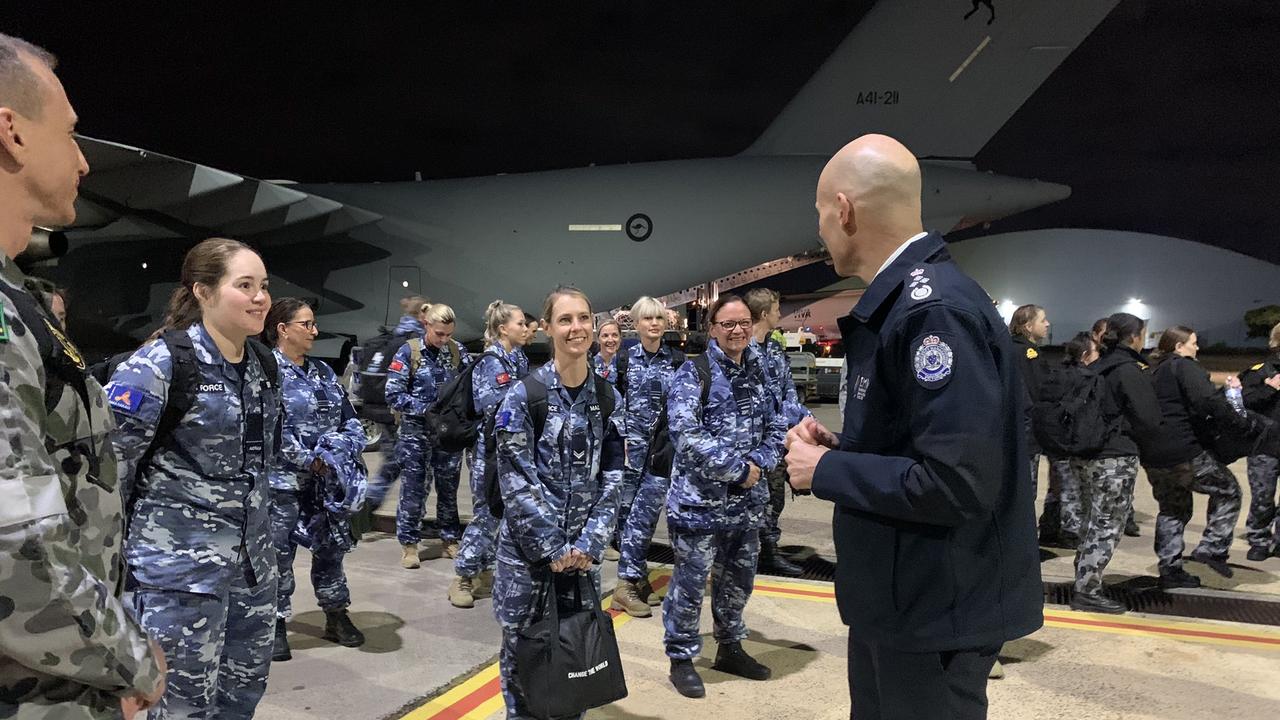
He indicated yesterday Premier Daniel Andrews did not raise Victoria’s plan to request more than 1000 ADF personnel when the pair spoke on Tuesday night.
“These situations can be quite fluid and the needs can change in a short period of time. If they didn’t end up needing that additional support and that can be done by their police service, well, good,” Mr Morrison said.
The Herald Sun understands Victoria Police Chief Commissioner Graham Ashton’s intervention on Thursday morning contributed to the decision to revise the ADF deployment.
He told 3AW force command had not been consulted about the rollout.
Asked if it was a difficult balance, Mr Ashton said: “Of course it is … the army themselves don’t have any local domestic powers. Whatever they’re doing needs to be very much in support.”
Victorian Opposition Leader Michael O’Brien said: “Daniel Andrews should be welcoming ADF help with open arms, not turning his back on it.”
A Defence spokeswoman it was “ready to assist the Victorian Government in this evolving situation”.
More than a dozen personnel will arrive today to bolster testing centres.
MORE NEWS
UP TO 30PC OF QUARANTINED RETURNED TRAVELLERS REFUSING TESTS
WHAT SPARKED MELBOURNE’S BIG FAMILY CLUSTER
PM: WE’VE GOT TO LIVE ALONGSIDE COVID-19
— With Rhiannon Down
Originally published as 41 new COVID-19 cases as Melbourne hotspot transmission worsens

